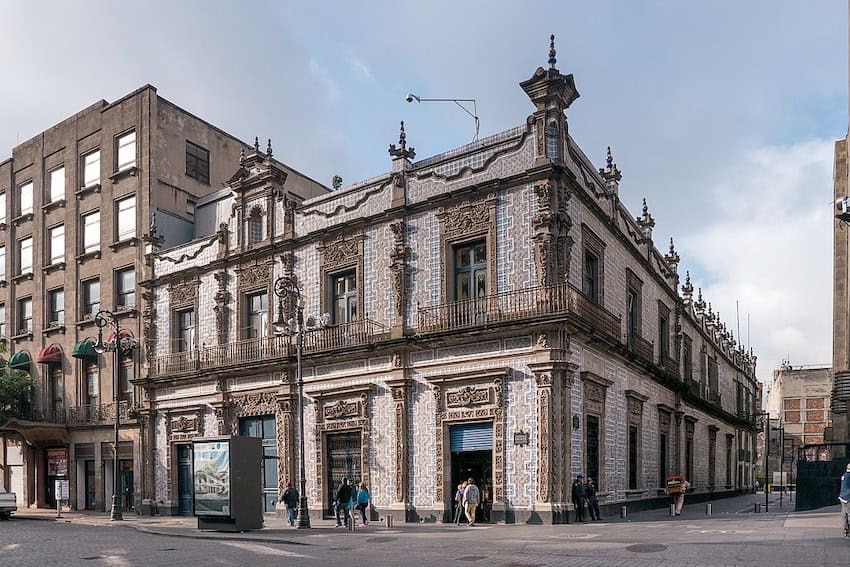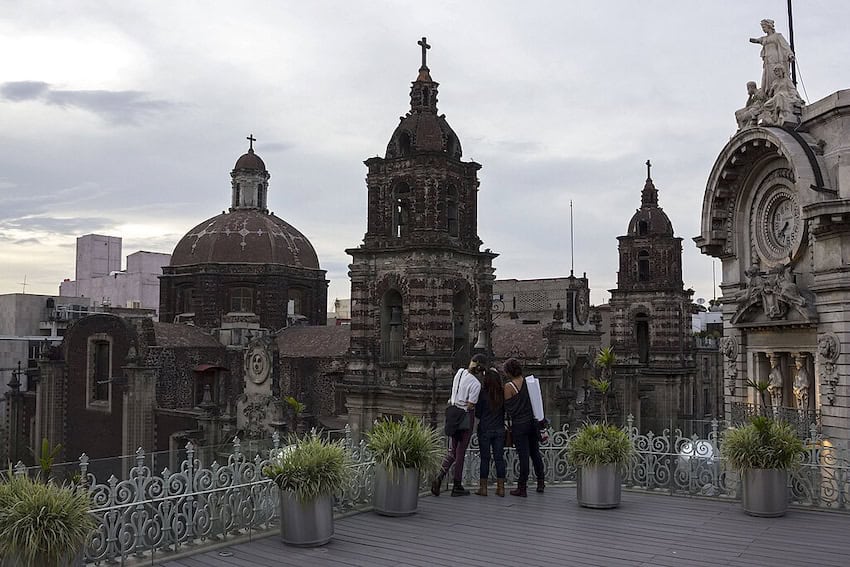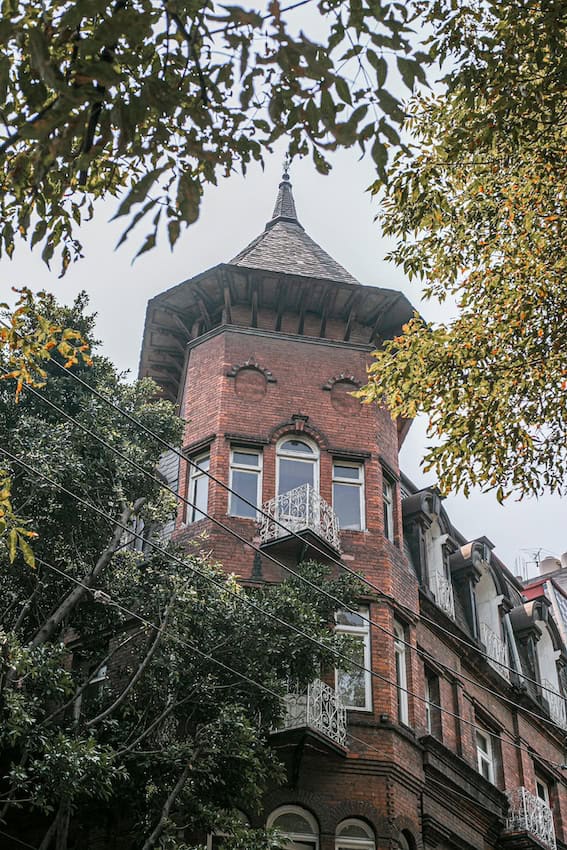One of the great joys of living in Mexico City is that its streets are still walkable — if you know how to dodge broken sidewalks and loose cobblestones. GuruWalk’s most recent ranking agrees with me: the capital beat Tokyo among the best walking cities in 2025. Sadly, that’s something you realize when you lose it. Growing up in the heart of Coyoacán, I took for granted that there would be a café or vintage bookstore on every corner and that churros and tarot readings were available just blocks away.
As a city that’s over 700 years old, the Mexican capital offers a unique variety of architectural styles and historical sites easily accessible on foot. Craving a colonial vibe? Chimalistac is your choice. Eager for a Porfiriato-era pedestrian street? The Historic Center is for you. How about a more Bauhaus feel? We’ve got plenty in the south of the city! After years of enjoying long walks in my hometown, here’s an insider’s digest of the most beautiful streets in Mexico City.
Avenida Francisco Sosa: Stroll like a hacendado

Running from Avenida Universidad to Calle Tres Cruces, Avenida Francisco was originally built in the 16th century as the main connection to the town of San Ángel when Coyoacán and San Ángel were separate municipalities.
After over 500 years of history, Francisco Sosa is today framed by old ash trees and offers magnificent baroque temples and colonial-era haciendas, as well as some of the best bakeries in town. One of my absolute favorites is Café Ruta de la Seda.
Although it’s not located exactly on Francisco Sosa, you can walk your way from Coyoacán’s zócalo to Calle Pino. If in doubt, search for Parque de la Aurora and you’ll find the spot on one of the park’s corners. Order a slice of Kyoto cake and thank me later. Also, try arriving early for breakfast, before 10 a.m., or expect a line of over an hour!
Calle Amargura: Stepping back into old San Ángel

With haciendas and convents gracefully built over centuries-old cobblestone streets, this is one of San Ángel’s most iconic streets. Gorgeous bougainvillea bushes frame the wooden doors that distinguish this southern neighborhood of Mexico City. Arched alleyways and Baroque churches can be found as you walk along Calle Amargura, offering interesting opportunities to appreciate the religious architecture of 17th-century Mexico.
If you’re free on a Saturday morning, do not miss the chance to visit the art market in San Ángel’s zócalo. After enjoying the exhibition offered by local artists that weekend, it is simply a joy to spend the afternoon walking through little streets like Amargura. Before you know it, you might find yourself on Plaza de los Arcángeles. Formerly the central piece of the San Jacinto Monastery, this baroque corner in San Ángel has three stone benches, each dedicated to an archangel: Michael, Gabriel and Raphael, alluding to the spot’s name.
Avenida Francisco I. Madero: The heartstring of the Historic Center

Often referred to simply as Madero, this avenue is currently the main access road to the Zócalo and one of the busiest pedestrian routes in terms of tourism and shopping in the entire capital.
If you’re an architecture nerd like me, do not miss the chance to visit Casa de los Azulejos, a luxurious example of how Talavera Poblana ceramics were once used to decorate the exteriors of Baroque buildings. Built in the 18th century, it is catalogued as one of the Mexico City’s “most spectacular” residential palaces, in the words of the city’s government.
Ever had breakfast at a Sanborns? This is your chance! With reasonable prices, you can enjoy traditional Mexican cuisine, with the restaurant’s special seasoning that feels like home. Having lunch at the Casa de los Azulejos’s Sanborns branch is like having grandma’s hot cocoa in a luxurious 300-year-old Baroque palace. On Madero, that’s actually possible.
Calle Isabel la Católica: Sor Juana’s old haunt

On the corner of Isabel la Católica and Avenida Cinco de Mayo, you’ll find a ceramic plaque: “This street was called Carreras (races), down which the conquistadors fled during the siege of Tenochtitlan.” Today, the street bears the name of the monarch who sent those conquistadors. Beyond the cultural breviary, Calle Isabel la Católica is dotted with wonderful cafes run by local chefs and baristas, often graduates of the Universidad del Claustro de Sor Juana.
When I was in high school, my mother taught business administration at the Claustro. Her students used to show me these trendy spots, and I learned to distinguish the taste of burnt coffee with them. Every now and then, I accompanied my mother to the university and enjoyed wandering around the Historic Center Center. That’s when I came across Museo del Estanquillo’s sky terrace. It’s easily one of the loveliest views downtown, where you can enjoy a nice cup of coffee and delve into what Italians call “dolce far niente”: the joy of doing absolutely nothing, watching passersby below.
Avenida Presidente Masaryk: For the couture connoisseur

Prada, Dior, Cartier, Louis Vuitton and other haute couture houses have found a home on Avenida Presidente Masaryk. As one of Polanco’s most walkable streets, with wide sidewalks and nice spots for brunching, the eyes can feast on Mexico City’s California-style architecture. Polanco screams expensive: the country’s most exclusive hotels and restaurants have thrived here, and people enjoy strolling across Masaryk on a Sunday morning.
If you want to dive into Polanco’s chic fantasy, do not miss the chance of brunching at Casa Portuguesa. You can walk from Masaryk to Avenida Emilio Castelar. Just in front of gorgeous Parque Lincoln, enjoy a wonderful croissant with jelly to start. Even though their specialty is bacalao, my personal favorite is their huevos cazuela. End your breakfast with a nice latte and rejoice in the neighborhood’s luxury.
Calle Colima: Where Roma Norte really lives

I think Calle Álvaro Obregón is overrated. Want to really dive deep into Roma Norte? Head straight to Calle Colima. Home to some of the capital’s trendiest fitness studios and bistros, this tree-lined median street could become the heart of your digital nomad era.
Just like the surrounding streets, Colima has textile design studios that combine traditional backstrap loom techniques with the latest fashion trends. In Roma Norte, not only can you wear fashion, but you can use fashion. Along with several vintage clothing stores, you can find designer houses in every specialty. Ceramics, candles, jewelry — the sky’s the limit.
So picture this: you just had the perfect yoga class on your perfect yoga mat in your perfect outfit, and you’re crave the perfect latte to finish the perfect morning. You walk across Colima and find Constela Café: a wonderful cafecito where you’ll order an iced coffee. You can also try their ceremonial grade matcha to go and enjoy the rest of the day walking around one of the most beautiful streets in Mexico City.
Andrea Fischer contributes to the features desk at Mexico News Daily. She has edited and written for National Geographic en Español and Muy Interesante México, and continues to be an advocate for anything that screams science. Or yoga. Or both.
